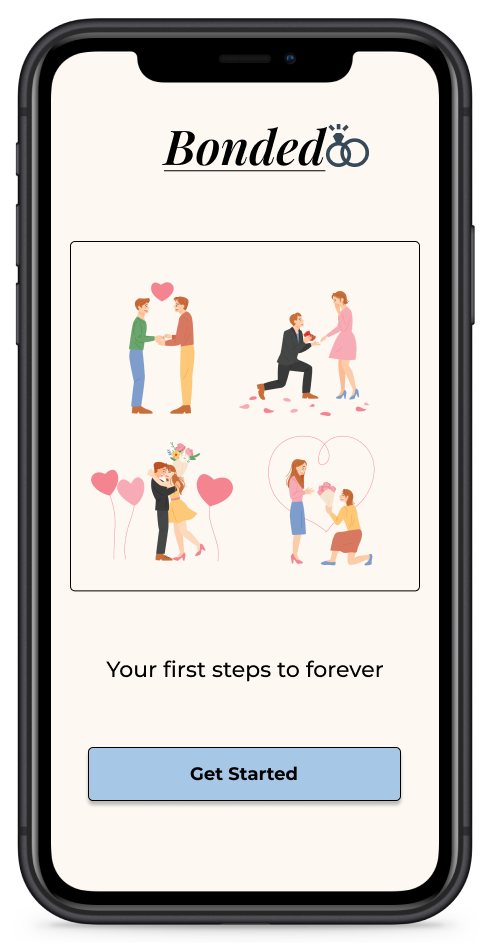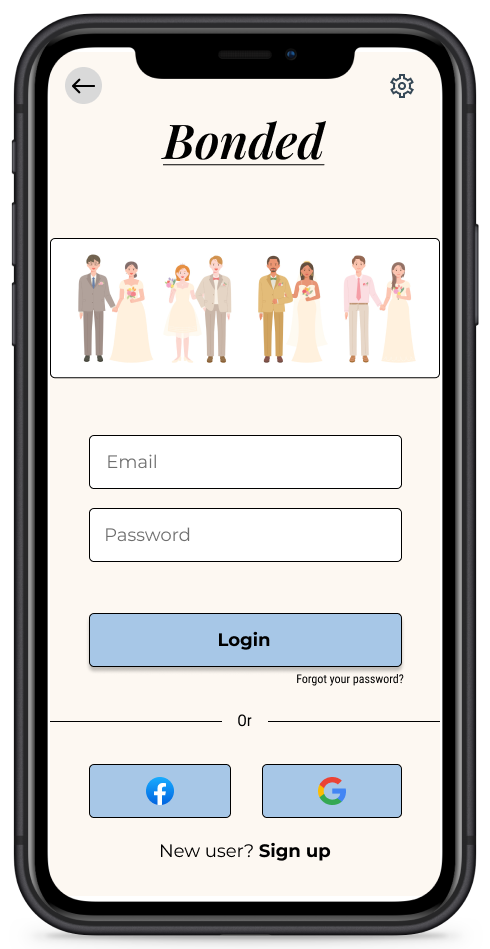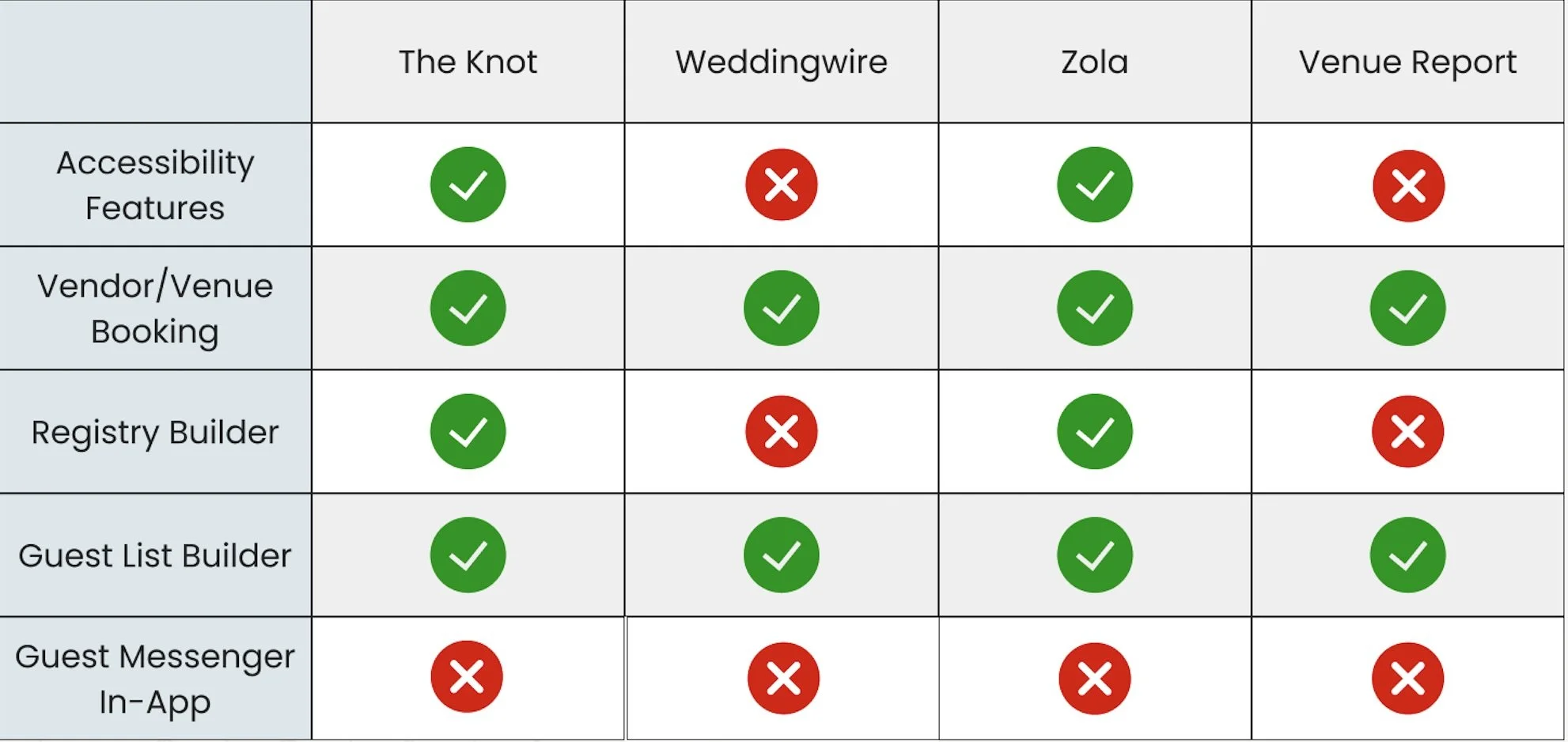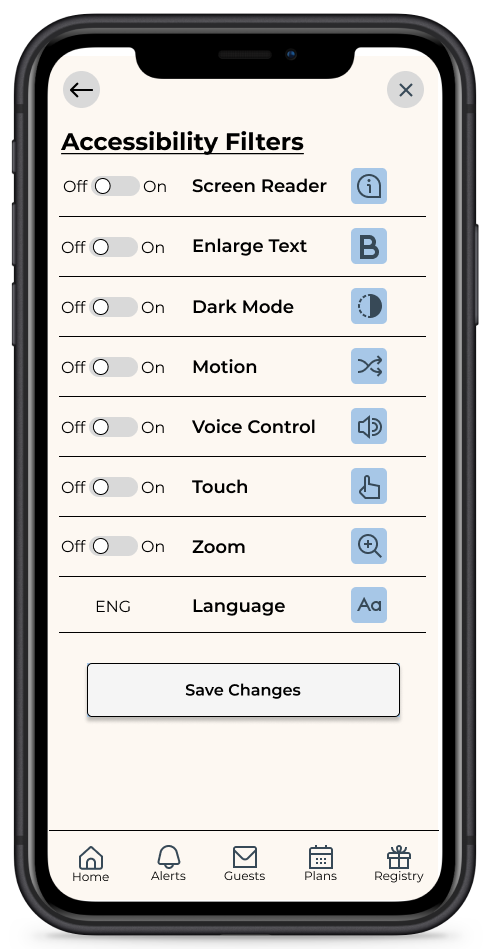
Bonded, a wedding planning app concept
In response to the demands of couples navigating the fast-paced world of wedding planning, this UX project endeavors to create an innovative app, streamlining and simplifying the entire wedding planning experience for a stress-free journey.
Overview
My Role
Lead designer
Interaction designer
User researcher
Prototype
Design system
Platforms
iOS
Android
Year
2023
Design Process
The 6-step UX process shaped an exceptional wedding app with tailored features, innovative solutions, and continuous evolution to meet evolving needs.
User Research
The wedding planning app's UX research involved comprehensive secondary research, competitive audits, diverse user interviews, and usability testing. Analysis of transcribed interviews and quantitative data provided valuable insights for empathizing with user needs.
User Needs
Identify specific user needs related to guest list management, vendor coordination, scheduling, and registry creation to inform feature development
Pain Points
Highlight the challenges and pain points that users encounter during the wedding planning process, such as communication difficulties, scheduling conflicts, and accessibility barriers.
Research
Conduct a comprehensive competitive analysis to assess the strengths and weaknesses of existing wedding planning apps, identifying opportunities for differentiation and improvement
Synthesize
Synthesizing user needs, pain points, and competitor insights informs effective solution development by addressing challenges and leveraging weaknesses.
Problem
How can we design an intuitive and unified UX to streamline the wedding coordination process, allowing users to efficiently manage guest lists, communicate with vendors and venue owners, and build registries within a cohesive platform? Furthermore, how does the app assist vendors and venues in attracting customers through enhanced visibility and seamless interaction within the wedding planning ecosystem?
Competitive Audit
The Knot, Wedding Wire, Zola, and Venue Report, leading wedding planning platforms, each have strengths and areas for improvement. The focus should be on enhancing accessibility, refining registries, and upgrading guest messaging to stay competitive and meet user needs.
Opportunity
An inclusive wedding app streamlines planning with guest messaging, task management, and accessibility features.
Goals
Our UX goal is to create an inclusive wedding planning app that streamlines communication, schedule management, and accessibility for all users
Streamlined Communication:
Ensure seamless messaging and document sharing between users and vendors.
Measure:
User feedback scores on communication tools and time to resolve inquiries.
Effortless Schedule Management:
Provide a clear, intuitive timeline for planning tasks and appointments.
Measure:
Task completion rates during usability research
Enhanced Accessibility:
Design for inclusivity with features like text-to-speech, high-contrast modes, and multilingual support.
Measure:
Accessibility compliance audits and user engagement across diverse demographics.
I started a low-fidelity prototype of the wedding planning app based on insights from a competitive audit. This helped identify key features like in-app messaging, task management, and accessibility, ensuring the design addresses user needs effectively.
Lo-fi Prototype
Usability Testing
In UX testing via Zoom with a low-fidelity wedding app, key indicators were tracked, highlighting universal confusion about the absence of a scheduling feature for bookings and challenges with guest selection and group messaging. These findings emphasize the need for inclusive design in achieving a universally satisfying user experience.
Key Insights
Most of the users wanted a feature to confirm date, menus, and other details.
All of the participants felt it would bring value to the app to have a way of messaging individuals or groups of guests.
The accessibility options in the settings for the app was universally commended in the study.
All of the users asked if there would be a way for users to find venues that had accommodations for elderly guests.
Impacts
Impact 1
By implementing a messaging feature allowing users to contact individual guests or groups led to increased user satisfaction
Impact 2
By streamlining the wedding planning process of finding a venue, booking vendors, creating a guest list, in-app messaging to coordinate with guests, and building a registry steered toward achieving UX goals
Impact 3
Adding a accessibility filter for venues allowing guest to screen for accommodations for specific guests allowed for an increase in accessibility options.
Impact 4
After synthesizing insights, finding themes, and iterating the prototype the second usability test yielded higher task success rates and reduced error rates.
Engaging a diverse participant group, conducting remote usability testing, and implementing a low-fidelity prototype have yielded valuable insights. The emphasis on key performance indicators, such as time on task and completion rate, highlights the importance of efficient user interactions. Universally valued features, including messaging capabilities for all guests and an accessibility filter for venue information, underscore the significance of inclusive design. These findings emphasize the critical need for accessibility features, ensuring a positive and universally satisfying user experience in the mobile wedding app.
Lessons Learned
Design for all users:
I have to keep in mind that I am also designing for the vendors and venues. What do they see? How is using my app good for their business?
Iterative Testing Drives Efficiency:
Low-fidelity prototypes and remote testing enabled rapid iteration, focusing on efficiency metrics like time on task and completion rate to refine user interactions.
Next Steps
In conclusion, the next steps for the mobile wedding planning app involve strategic design iteration, meticulous handoff preparation, and collaborative engineering. Incorporating insights from usability testing, these steps aim to refine features and ensure a seamless transition from design to development. This process underscores our commitment to delivering a polished, user-centric app for a positive user experience.









